July 2021 Wrapup!
July has ripped on by (and I say that because I have been on holiday, and am writing this quite early in the month, truth be told). I could say any old bollocks and it’d just be seen as me being quirky. Actually, I shouldn’t joke because the current thing is a lockdown that I have seen referred to as potentially extended to Christmas and uh fuck that.
Anyway!

June had four Game Pile articles this month, which is the usual number. We have two text articles, and three, count ’em three video articles:
- I made a video of me playing (and failing to beat) Hurtin’ Hermits, a minigame from the Hermitcraft server.
- I considered the works of Raven Software in light of their 1992 game Shadowcaster.
- I reconsidered the blind eye I’d turned to problems in Shadow Warrior when I looked at Shadow Warrior 2.
- I got to talk about Familiar Alchemy, and complain about ‘semi-cooperative.’
- And then a video about the Buck Rogers: Battle for the 25th Century Game, but really, just a bunch of dumping on how messed up the history of TSR is.
While that happened, what about the Story Pile?
- Sk8 The Infinity. I liked this anime of hot boys that really, really should be making out.
- Mitchells Vs The Machines. Just out of Pride month, a disappointing thing that didn’t belong in Pride Month.
- Widget The World Watcher. A cartoon from my childhood that I wrote about in January and cast to this time in the month.
- Gen:Lock, a web animation anime that kind of has no right to be as amazing as it is.

This month I also started on the project We Are The Night, which I kicked off by making a post that just explained the idea. Part of the point of making in public is making sure that you’re aware of not just the things that are done, but the way things get worked on – and sometimes that just means things stop, and that’s okay. That also led to a followup post later in the month. We’ll see how regular those posts are. This public making continued as I worked on redeveloping The Botch for a print-and-play environment.
I wrote about Feeling Superman, and about my weekendless childhoods due to the Working Bees. I also made a Masterpost of my Netflix Marvel posts, bringing them together in a nicely easily read way, all for convenient reference. In my study posting, though, I took an opportunity to explain the idea of Caillois’ axes of play, through the medium of Transformers toys.
I wrote a sad article, because I don’t like being unduly negative about Magic: The Gathering about how I’m not interested in Adventures in the Forgotten Realms, which is a bummer to have written. While I was in a D&D mood, though, I also talked about The Hexblade back in 3.5, a class that’s kind of still misbegotten in 4e, and the Swallowers, a kind of jokey memey heritage of friendly non-evil Beholderkin.
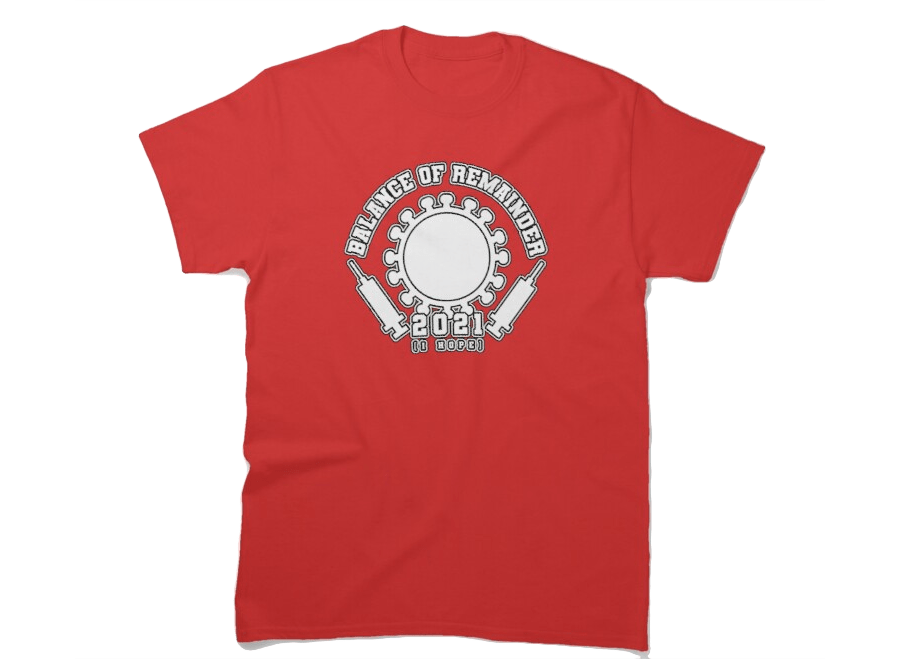
As I write this, we are in extended lockdown. I had a PhD timetable written up in January, that was, based on the information presented by the government in that month, expecting that I’d have my COVID vaccine right now. This lockdown is being treated as if it’s the fault of dirty poors transmitting their viruses around, while rich people go about their days unaffected by the rules that the rest of us live under. It’s possible by the time this article goes up, things change.
But for now it’s going to be a darkly ironic note, since I’m seeing it more likely I get my vaccine in 2022.
If you’re, like me, in the Balance Of The Remainder category, you can pick up stickers or shirts and laugh hollowly.
Fingers crossed things don’t get worse.
Game Pile: Buck Rogers: Battle for the 25th Century Game
MTG: July’s Custom Cards: Echo, Echo, Echo!
With Time Spiral Remastered hitting the shelves this year, I got to think about my earliest custom card designs, from back around Onslaught through Time Spiral era. Back when Time Spiral first landed, it brought with it a change to echo, and at that time, Fox and I designed five different ways for Echo to work across the five colours. I love Echo as a mechanic, but it is something of a dead mechanic. Wizards doesn’t tend to play with strict drawback mechanics, which is a bummer (to me).
But despite that, I quite like the way those cards worked out, so I dusted the ideas off and tried to make some new cards using those ideas!
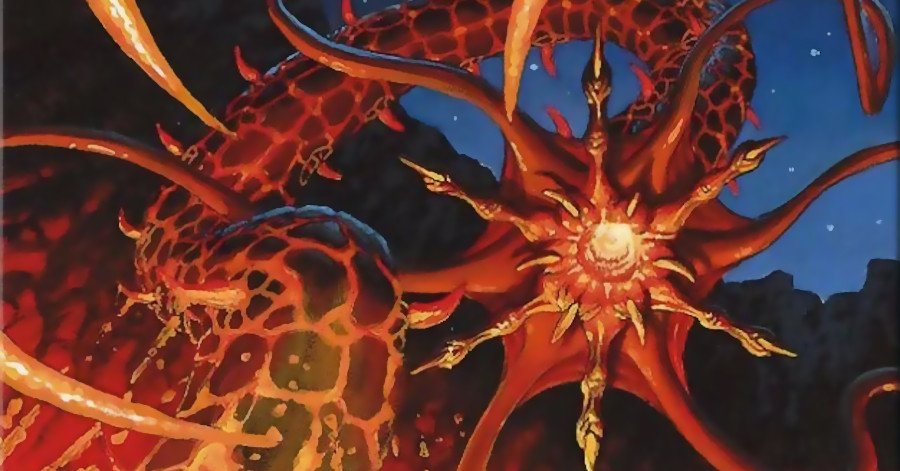
The Callomania of Haruhi Suzumiya
Anime is an art movement that has encapsulated thousands of different competing threads and there’s no true centralising canon because it’s fragmented across all sorts of cultural anchor points. Australians of my age that are into anime so often got started because Aggro’s Cartoon Connection screened Sailor Moon, the ABC screened Astro Boy, Cheez TV screened Teknoman and SBS, in the late 90s, screened Neon Genesis Evangelion, meaning that those four anime are sometimes seen as ‘common ground’ topics. Common ground for one age bracket in one country, and even then, only sometimes.
There are some events that can be looked upon, in the english-speaking anime fandom, though, in terms of their impact on shared cultural spaces, typically conventions, but also just, anime releases that somehow managed to be widespread enough at the right time that they became foundation to the conversation. The big three of Naruto, Bleach and One Piece. Evangelion movies. Fullmetal Alchemist, then Fullmetal Alchemist again. A collection of trans girls and boys and nonbinary people that can trace a lineage from Ranma 1/2 through to Kampfer and Haku and Soul Eater and maybe a few tracing lines to Vandread.
There is a category of people I can annoy enormously by responding to a Touhou picture with which anime is this from?
There’s only so much room for any given series to suck up a lot of the oxygen in the fandom space. You can’t typically have five or six ‘big name’ anime that ‘everyone’ has an opinion on. One of those ‘event’ Anime, that rose, became incredibly prominent, and then deformed the culture at large, becoming one of the rings in the tree trunk that is this strange cultural enclaves, was the enormous franchise known as Haruhi Suzumiya.

Announcing: The Disney Animated Canonball, Season One!
Hey, do you like me?
Aw, thank you.
I mean anyway, do you like hearing me talk about movies?
Well, Fox and I have a new podcasting project: The Disney Animated Canonball. It’s a podcast where she and I watch every movie in the Disney Animated Canon, then talk about them. It’s being designed to operate on a season basis, where every season comes out in a block so you can binge the whole thing. Rather than ask you to show up week to week, instead, here’s an entire season of audio to dive into. Want to hear me and Fox talk about Disney media for nine hours? Well, here it is!
This season covers the first block of what we call the ‘Golden Age’ of Disney. That is, it starts at Snow White and includes hits like Pinnochio and Dumbo, but it also farts out at the end with The Adventures Of Ichabod And Mr Toad, a movie so bad and with a title so dreadful I was genuinely unsure if I’d heard the title right.
You can get the podcast on Spotify, Apple Podcasts, Pocket Casts, and any other good podcasting service that’s checking the standard RSS feeds? And failing that, you can head to the website.

Story Pile: Gen:Lock
If you’re not familiar with the term Rooster Teeth, well, congratulations on not being as tragically online as I have been for the past twenty years. First rising to prominence through the machinima web series Red Vs Blue, a 2003 comedy series told through the medium of the limited waggly animations of Halo characters in a multiplayer map, Rooster Teeth followed up on that success with a lot of minor projects, including animation work for a bunch of other people. They then went on to create the fanfic oroborous that is RWBY, a show I tried and wasn’t fantastically impressed with, but also seemed largely harmless. At the time I watched it, I said:
here is a show where you, girl born in 1995, get to be a main character superhero with a sick ass scythe gun.
Knowing this, I had no strong positive opinion on Rooster Teeth as a company. They were a sliver of 2003 humour that, yes, is undeniably part of my personal lexicon — which tastes like red bull. Which is disgusting — but I didn’t imagine that they were particularly important creators.
A friend mentioned hey, you should check out Gen:Lock. I think you’d like it.
And, because I was a little dubious about that, I didn’t check it out for two years. And it turns out that that friend knows me way, way better than I’m used to being known, ‘cos this year, on a lark, I watched Gen: Lock and then I became mildly insufferable as I tried to find an awake friend who had also watched it so I could talk to them about it.
This is gunna feature some broad ‘spoilers’ but nothing I feel is a big deal. This isn’t really a series about The Mystery, this is a series about the moment.
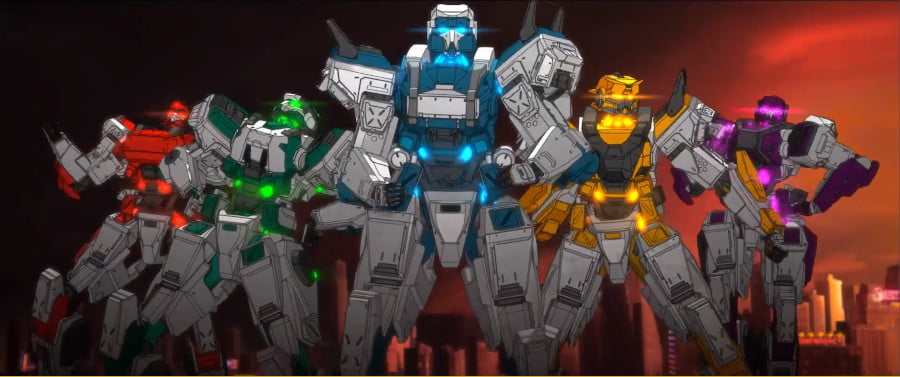
We Are The Night: Actual Constables Aren’t Bluecloaks
These articles document the ongoing process of examining the things required to make a Blades in the Dark hack. The premise is using Blades in the Dark to emulate a heroic vigilante environment, akin to the settings of Gotham City from We Are Robin, or Ikebukuro from Durarara!!

This time, I want to talk about a setting difference that’s going to present a problem with the factions in We Are The Night: Police.
Continue Reading →T-Shirt: Team Vaccine
As of when I write this, I am unvaccinated. Here in Australia, vaccination has happened on a schedule that we might conservatively call ‘a bit of a mess.’ Since February I’ve been aggressively checking the schedule to determine when I can get vaccinated, with an eye to being as soon as possible.
The category I belong to, according to our current government schedule, is ‘Balance Of Remainder,’ which is to say ‘everyone who isn’t old or a conservative politician.’ And so… time to cheer for the team.
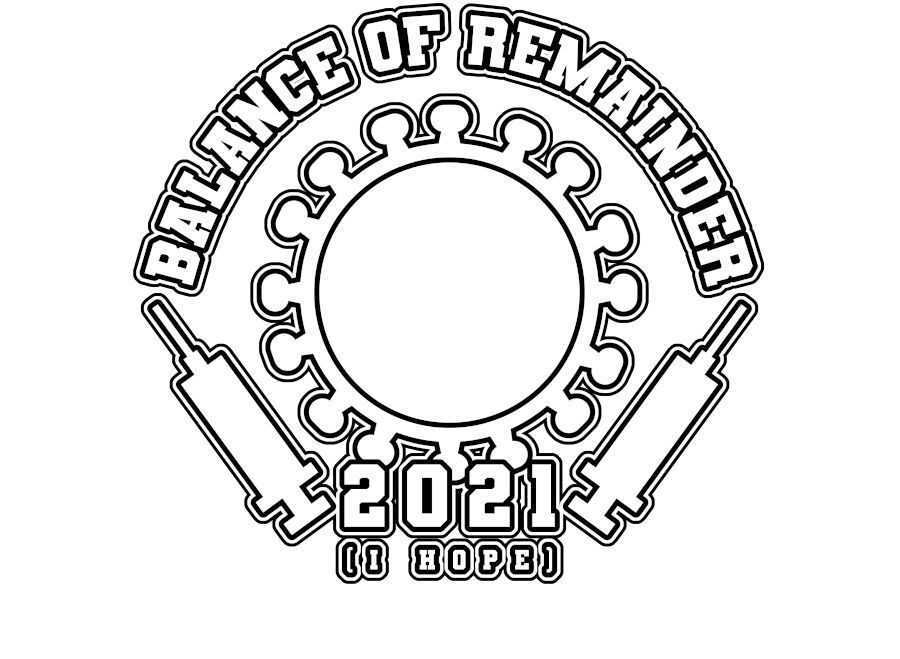
Here’s the design, on a shirt:

You can get it on Redbubble.
Game Pile: Familiar Alchemy
Two things before we start. One, I backed this game on kickstarter, because a friend of mine, Calvin Wong Tze Loon, talked about doing work for it on his twitter. I followed that, thought it looked good, and backed it. I have, therefore, a clear connection, socially, to the making of this game. As it happens, Calvin’s main job was editing the rulebook, and the rulebook is pretty stellar, but I would say that, wouldn’t I.
The other thing, before I talk about this game, I need to get one thing out of the way, up front. The kickstarter for this game, the reason I own this game, the access point for this game, describes it as:
A wondrous world of plants, potions and familiars await in Familiar Alchemy, a semi-cooperative game rooted in Scottish folklore.
See that? See them bolded words?
What I need you to know is that’s a fucking lie.
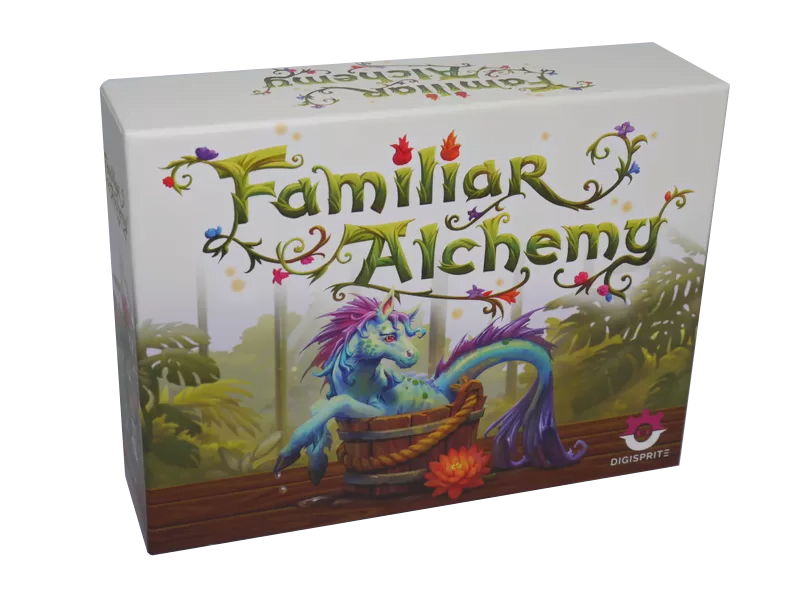
BuJo Tricks: Closing It
A little bit recently – as when I wrote this, which is months ago now – there was a conversation I had with a friend about why I use a material journal and take notes there, rather than recording audio and using digital tools for transcribing those notes and highlighting what’s important.
I’ve remarked how 2020 was the year I fell out of Bullet Journalling, which, I mean, we all fell out of things, but I fell out in January, months before the lockdown and heightened precautions. Last year, I did a lot of things without my bullet journal as a personal ritual, as a thing that broke up long sessions of computer usage. I gave up on notepaper and creative tracking, which had, I think, a negative effect on me, especially a lot of long term projects. It made me appreciate things my bullet journal is good for.
Particularly, right now, my Bullet Journal is in a different room.
It’s closed.
My journal is great for helping to order a disordered mind; I flip it open and check it out when I have free time, and look at the important things I need to do. If I’m feeling it, I can tackle one of them, or progress it, or I can stop and not. But crucially, my bullet journal being a thing I can put down and close means that there are times I can easily commit to not worrying about it.
I can say, with this phrase, that I have done enough for today, and go address that in the journal in the morning.
Now, what is fun, is that friend? They went on try out physical media, and commented how restful it was. So that’s nice to know I’m not just fooling myself. I could be fooling two people.
How To Be: Goliath from Gargoyles (in 4e D&D)
In How To Be we’re going to look at a variety of characters from Not D&D and conceptualise how you might go about making a version of that character in the form of D&D that matters on this blog, D&D 4th Edition. Our guidelines are as follows:
- This is going to be a brief rundown of ways to make a character that ‘feels’ like the source character
- This isn’t meant to be comprehensive or authoritive but as a creative exercise
- While not every character can work immediately out of the box, the aim is to make sure they have a character ‘feel’ as soon as possible
- The character has to have the ‘feeling’ of the character by at least midway through Heroic
When building characters in 4th Edition it’s worth remembering that there are a lot of different ways to do the same basic thing. This isn’t going to be comprehensive, or even particularly fleshed out, and instead give you some places to start when you want to make something.
Another thing to remember is that 4e characters tend to be more about collected interactions of groups of things – it’s not that you get a build with specific rules about what you have to take, and when, and why, like you’re lockpicking your way through a design in the hopes of getting an overlap eventually. Character building is about packages, not programs, and we’ll talk about some packages and reference them going forwards.
This month, we’re going to look at a challenging build; we’re going to be looking at a powerhouse of muscle and stone, in the form of Goliath from the Disney series Gargoyles.
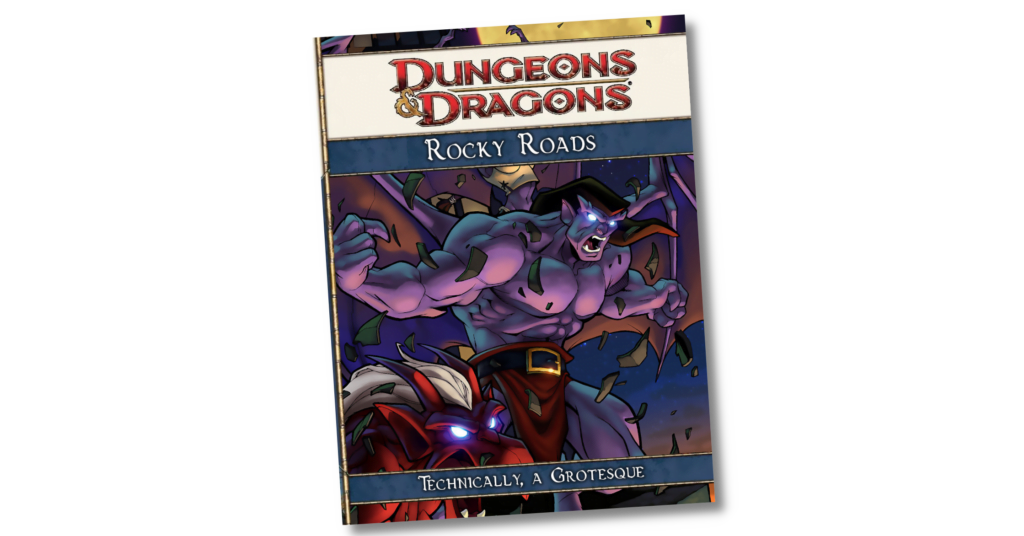
🐝 Working Bees 🐝
According to all known laws of aviation, there is no way a bee should be able to fly. Its wings are too small to get its fat little body off the ground. The bee, of course, flies anyway because bees don’t care what humans think is impossible.
No, not that kind of bee.

Content Warning: Bullying, Fundie Upbringing
🐝🐝🐝🐝🐝🐝🐝🐝🐝🐝🐝🐝🐝🐝🐝🐝🐝🐝🐝🐝🐝🐝🐝🐝🐝🐝🐝
Story Pile: Widget The World Watcher
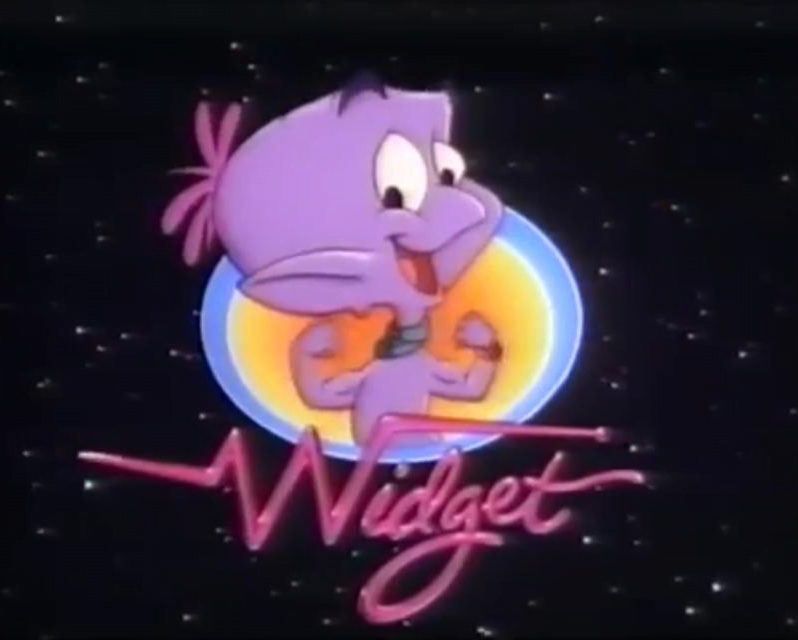
Well, you see, danger and evil are everywhere. Nature thought that we didn’t care. Who can help the world survive? Who can keep a dream alive?
Alive?
Alive?
CoX – Ghostwright
Time to time, I write up an explication of characters I’ve played in RPGs or made for my own purpose. This is an exercise in character building and creative writing.
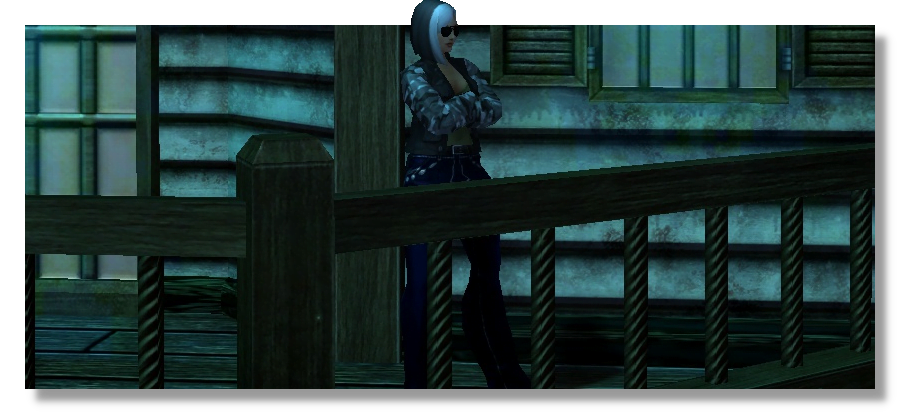
“You’re back early, how was the party-“
“Birthday’s haunted.”
“What?”
She loaded her bag with all the rock salt she could carry as she headed back to the front door. “Birthday’s haunted.”
Reagan got a lot of things from her parents, like the cute little magic shop (which is nice) and the cursed connection to a moon cult (which isn’t so nice) and the regular customers that want curses, hexes, and boner pills (mixed bag) and the speakeasy full of monsters and nightkin underneath it (pretty cool but lousy tippers). Now, she’s doing hero work, you know, as part of the business, because it needs doing.
Talen Talks Netflix Marvel
There, are at this point, six major Marvel Netflix TV series, and I have watched all but one of them. Starting in 2015, the Marvel Netflix experiment was seen, for a time, as a reason to get Netflix, and gave us a sequence of shows that were, in their own ways, pretty impressive. If you were a critic who wasn’t me, you’d talk about how they elevated a different kind of superhero, how they showed a different dimension of superheroics and were a step apart from the brightly coloured optimism and simplicity of the movies.
I don’t tend to agree with other critics, I find.
Anyway, I did watch exactly the right amount of all of these series and wrote about them, but found to my amazement going back, that if you want to look at those articles there’s really no single source. I watched them in orders close to release order, all higgledy-piggledy. Heck, my articles about it predate the Story Pile terminology I use on this blog to sort that kind of article.
With that in mind, what I’ve done here is a masterpost, bringing these six series together, so you can read them all conveniently.
Game Pile: Shadow Warrior 2
Content Warning, in case you miss it in the video itself: This is gunna be about, in part, the race-bending casting of Jason Liebricht as Lo Wang.
MTG: Not Interested In The Forgotten Realms
Tomorrow Magic: The Gathering – Adventures in the Forgotten Realms will drop on MTG Arena and MTGO. I’m not excited for its release – in fact, at this point when I’m writing this, my initial active resistance to the idea has turned into full-blown antipathy. Simply put: I think this is a bad idea, root and branch.
I don’t mean in that pontificating way of ‘wizards should do this for the good of the game.’ That kind of heavy handed rhetoric involves a vision of the future that feels like climbing mount cleverest. It’s the same mindset that calls for bannings on day one, where your ability to prognosticate about the future of the game is some kind of skill you want to demonstrate. Don’t get me wrong, some people can do that – Pat Chapin was calling Jace overpowered real early, but let’s presume we’re not talking about Hall Of Famer big brain Mike Flores’ Best Friend Pat Chapin.
It’s not like I’m not going to try some of these cards, or even play with them. It’s more that while I may have had interest in trying standard again with the release of a new standard set, that interest dissolved as this set was revealed. I’m more likely to sit things out, because I don’t like this set.
Why don’t I like this set? Especially since I haven’t played with any cards in it?
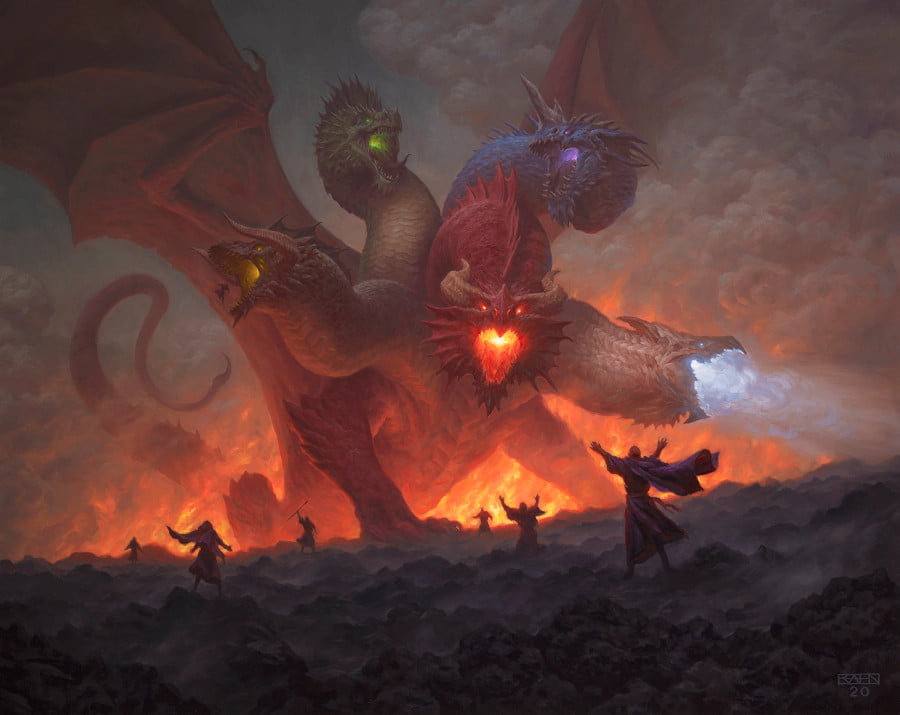
Not Attracting The Worm
Rhythm games fascinate me.
I can’t make them, not really. Not with my tools and skillset.
See, here’s the thing: I am a low-tech creator. I have some nice systems like computers that let me make my things look prettier, but ultimately, I’m not coding machines. I am not making mechanical devices that can serve as timers. Ultimately, because of the medium I work in, the things that dictate the types of games I can make are ‘what can people manage’ and ‘how can I do this with cardboard.’ There are some things I really wish I could make happen that I just can’t with my rules, and my current understandings of games.
Particularly, one thing I can’t really just ‘add’ to games is rhythm.
I’ve experimented with it – in the tiny flick-em-up Wobbegong-12, there’s a mechanic where players, if they don’t want to play in real time, have to all count down together to three, in order to power their carts. But that mechanic is kind of fuzzy and uncertain. After all, if players are counting down together, three, two, one, flick, what happens if someone falls out? The only enforcement is themselves, and other players, and the game is so silly it doesn’t really have a punishment system.

But if I want to make a rhythm game, like the whole category of videogames, I don’t have the means to do that, at least right now. What’s more I don’t even have the fundamental skill underpinnings to try. I don’t know what makes rhythm good. I can’t dance. I don’t know how to identify the beat, and every time people remark on this with me it’s with this incredulous ‘surely you can do this’ kind of reaction that makes me feel stupid. Which is embarrassing and we’re moving on.
It’s not like rhythm games aren’t doable with the tools and implements I have. Every clapping game, every call-and-response song, every make-up-a-rhyme, a bunch of grievance songs, almost any kind of singing, dancing, or clapping that involves playing with the possibility of the sound is itself, a kind of rhythm game. And those are games that just seem so impossible to translate, to put into a context that I can share them with people.
After all, the main way we have to convey rhythm is to show people, rather than to tell people.
3.5 Memories: The Struggles Of The Hexblade
We’ve spoken before about how the wizard and sorcerer presented a sort of top-and-bottom of the top tier of D&D 3.5’s utterly unbalanced nonsense space, and it’s something of a storied matter of lore that the Fighter represents a most obvious terrible class. It creates a pretty simple narrative that spellcasters are great and melee damage dealers are ass. This isn’t totally right – after all, the Truenamer, the worst D&D class, period, is a spellcaster, and there are classes that are primarily melee damage dealers that aren’t underpowered compared to standard enemy content.
But it does hold, generally.
The core rules brought with it a set of three arcane casters and four divine spellcasters. Of those divine spellcasters, two were what we call ‘full’ spellcasters – they cast spells at level 1, and every level their spells get better – and were the Druid and the Cleric, two of the most stupidly powerful classes in the game. The other two were the Paladin and the Ranger, who had a pretty interesting structure; both were full-base attack bonus classes, with special abilities that made them better in melee combat, and after level 4, they started to get a small number of spells that gave them a lot of potential options. And honestly, the Ranger and Paladin were pretty damn good. They weren’t the worldshakers that the primary spellcasters could be, but if you wanted to hang in their parties, you were at least going to get interesting choices and could do some cool things.
But what if there was an arcane class that was templated off the Paladin and the Ranger?
What if there was a melee-capable class that got arcane magic and special powers to round out their flavour space?
Well, there was.
Presented in the Complete Warrior, we got our Arcane Paladin-Ranger-type.
It was the Hexblade.
And it suuucked.
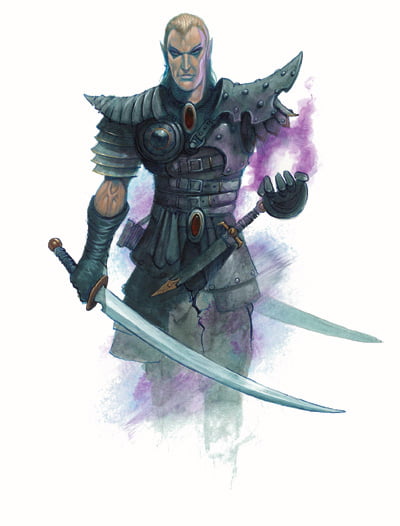
Story Pile: The Mitchells vs. the Machines
There are two parts to this article.
The first part, the easy part, the nice part, is going to come before the fold. No spoilers, just a little summary of this fun little movie that I had a good time with, because it’s a fun movie.
The Mitchells Vs. The Machines is a 2021 animated movie about a family road trip. It was going to come out in theatres, but 2020 kept happening, so instead it came to Netflix, where you can watch it right now, if you want. It’s about a teenage girl about to leave her home for college to study animation, and the ensuing feelings of family distance that come with it. It’s about one last road trip to bond together, to build memories before the onset of college life.
And then the machine apocalypse hits.
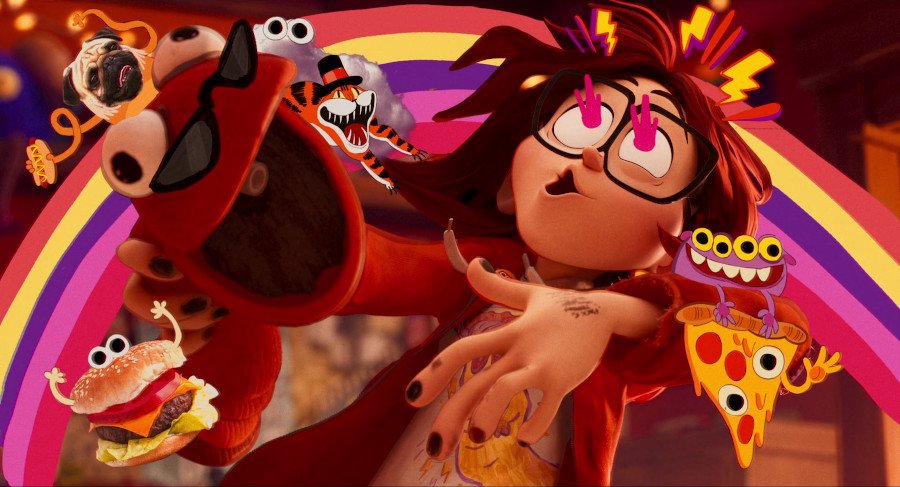
Look, you know the kind of colour-by-numbers kids’ movie we’re dealing with here. A family against the world, in their so-called car, coming up with schemes and chicanery to try and survive, then save the world. The main characters are a kind of likable, the jokes are very funny, and the sense of humour relies on actually knowing a few things about the kind of things they’re teasing.
It’s one of your heartwarming everything-works-out-okay kind of movie, with some fun unexpected laughs, a great sense of timing, and an interesting instagram-filter-and-stickers kind of aesthetic to express its character.
Solid movie. I liked watching it with my friend. It was a good time.
See?
We’re done, right?
I’m smiling!
And the rest is below the fold.
What I Can’t Do With Food
I’m in my late thirties now. I don’t like admitting that, I still feel like basically a large teenager. But I have been living away from my parents for twenty years, more or less, and it’s only recently that I realise regular daily cooking has made me a competent home cook. After all, I don’t think of myself as a cook.
But I mean how much can you do something every day for years and not make it something in your skillset?
Back in January of this year, I commented, a little flippantly, that I was going to give up on some things. That I was going to stop trying to be good at some things and just focus on things I already knew how to do, or that looked reasonably easily translated from things I already knew.
How’d that work out?
Perhaps obviously: Content Warning, FoodContinue Reading →
Revising the Botch
I released the Botch in 2016. I made this game in a week, with the help of a friend who had similarly manic energy creating the art, and what resulted was one of my most successful games.It’s not Dog Bear successful (though, same artist!), but it is a game I still think of fondly, can pitch easily, and sells well at conventions.
Remember conventions?
I don’t think that I’m perfect. Every person I’ve taught about making things, I tell every thing you make is making you better at making the next thing. And I have a lot of games – a big library of games. And some of them, with years of progress and learning, I’d like to revisit and improve. Since The Botch is one of my best, I’d like to start with that. I’m going to share with you some notes about improving and changing The Botch and ways it’s going to change in light of pressures that aren’t my fault.

Game Pile: Shadowcaster
There are two stories about Raven Software.
For those of you not familiar, Raven Software were-slash-are a Wisconsin-based videogame development company founded in 1990. They were responsible, most famously to nerds like me, for the games Heretic, Hexen, and Hexen 2, a set of first-person fantasy shooters that used id game engines to tell you the story of multiple fantasy realms being assaulted by dreadful Serpent Riders.
The first story, the story I know I’m part of telling, is as an understudy company that stands next to id software and waits for them to be done with an engine before they make a game. This is a history that tends to happen when you work backwards; id software made Quake, which Raven turned into Hexen 2. id made Doom 2, which Raven used to make Hexen. id made Doom, which Raven used to make Heretic. When I spoke about Heretic earlier this year, I said this, even!
This is not a wrong story.
It is an incomplete story.
Caillois and the Transformers
Remember Friend Of The Blog (But Not A Good Friend Because He’s A Massive Weirdo And Has Creepy Views About Women And Colonialism), Roger Caillois?
4e: The Swallowers
There are tales told, in the deep and dark places of the world, about vast, floating multi-eyed magical monsters, their minds full of hate, seeing a world of imperfection and foulness that they refuse to abide, wanting to reshape and destroy it all at once. There are tales told about their variations and mutations, things that they see as vulgar but necessary – smaller versions of themselves, foul mutations and permutations.
But there are other variations, ones they don’t mean to make.
Swallowers are chaotic, anarchic creatures, who look like the famously powerful tyrants of the underdark, but sharing none of their ambition and hate. Instead, what they have is curiosity, bubbling up from within as they bounce and float around the world, exploring the world.
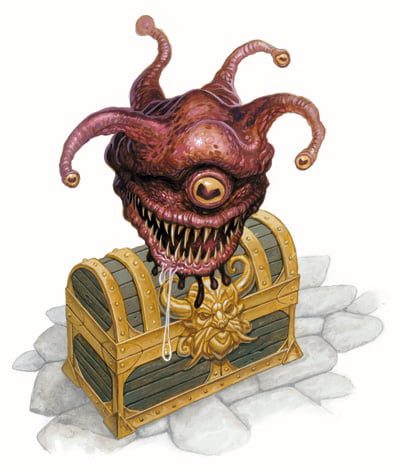
Divisions of Play
I am, on the record, one of those people who spends their time pointing out that there’s not a hard dividing line between board games and videogames. That the nature of the different platforms is permeable, that there’s flex and give between the two, and just because one of them can do things better or worse than the other doesn’t mean that they’re separate disciplines.
Yet, while they’re both games, I do find myself thinking about them in different ways, certainly when the time comes to talk about them, especially here, on this blog in Game Piles. In broad terms, I tend to care about the point of videogames, and the engagement of board games.

I know that part of this is going to be industrial. There’s an entire set of games that are primarily marketed as linear narrative experiences, and even games that don’t necessarily present themselves primarily that way create the impression they do. Overwatch is a game with very little in the way of coherent, moving, narrative story that you want to follow along with, even though you spend literally every moment of that game as she is played running around in a gameplay loop that explicitly does not want to advance or reward that narrative.
I mean how often do you see me talking about games that are themselves pure play loops, with neither beginning or end? I milked Star Realms for three articles, but it was a board game first.
I think it’s kind of funny, too, because videogames, with their procedural rhetoric, are really good at making a point, but I’m not necessarily always sure I understand the point they’re trying to make. Games like Call of Duty (Pick One) are typically constructed to be in the vein of classic war movies, with the idea that Soldiers Are Good, But Wars Are Bad, but do they do a good job of that? Does that interpretation feel more clear than others? Is it coherent? These are the kinds of questions you can bring to bear on that kind of work.

Board games – which in this case includes things like card games and even narrative games and RPGs – on the other hand, make a lot of small stories. It’s not like they lack the capacity for narrative. I mean D&D is a plot engine with a combat system attached. When I talk about those games, though, you’ll notice I very rarely talk about the stories those games tell – even the ones that want to tell stories!
When I wrote about Imperial Settlers in my honors thesis, I did write about the narrative that game constructs, and the way different mechanical choices and incentives created strange, disrupting visions of what was or wasn’t important in that narrative; you could construct pyramids to house dead emperors as swiftly as you could construct new blacksmiths, for example. That was part of a critical analysis of how that game reinforced its values, and what I would do to address that in a competing design.
It does feel, to me, a lot like a type difference; I talk about board games one way, videogames another way. It even means that some kinds of board games – like Fighting Fantasy gamebooks – get to live in this limbo where I kind of don’t talk about them as themselves, but instead talk about them in this vague, gestural way, talking about the genre rather than the ideas in each version itself.
Now, is this a rule? Not necessarily. After all, there are some games I engage with just for the playing. I have put a lot of time into Picross, for example. It is however generally worth my time to reflect on what kinds of things I think about when I engage with different types of game. What about single player board games? There, there’s a narrative I constructed – should I share that? What about digital board games? Should I be telling stories about the D&D games I’ve played in?
I sometimes say that my aim is to Use Games To Talk About Anything, and while glib it is important to me to show the way that games both enable conversations and how they connect to all culture (which in turn, connects to everything else). This is mostly, using games to talk about the ways I talk about games.
Story Pile: Sk8 The Infinity
Why now? Because it’s not Pride Month material, but it’s really close.
Sk8 The Infinity, stylised as SK∞ THE INFINITY, is a high water mark in the long-established genre of The Not Gays. Incarnated in this case as a classic ‘sports’ anime of ‘two hot boys and their mutual special interest,’ a genre deftly feigned by this year’s Misplaced Smooch Month Anime Haikyuu!!, Sk8 The Infinity is a Studio BONES production, with the talent of Hiroko Utsumi, formerly of the other most recent triumphant entry in the Not Gays genre, Free! which was about a heroic group of anime swimboys banding together to fund an animation studio, and also the anime adaptation of Banana Fish, an anime in the comparatively small Actually Gays genre.
And Sk8 The Infinity is, as much as this genre goes, real good.
Look, ‘good’ is a weightless word, all it tells you is I liked it, and I liked this. I liked this anime a lot and I think the story as much as it can signals that a bunch of these hot boys are kissing and it’s cool and the music is great and the sense of kinetic motion is excellent and the villain is ridiculous and the cultural insights are perfect and the boys are really hot and it’s great. I enjoyed it a lot. If you’re just looking for some extremely lightweight, predictable anime about hot boys who probably kiss, then you should check out Sk8 and then get an AO3 account for what I am sure must be an absolute torrent of fanfiction.
For those who want more, gunna give you a plot rundown and some light spoilers after the fold.
Continue Reading →The Connection of Haruhi Suzumiya
Anime is an art movement that has encapsulated thousands of different competing threads and there’s no true centralising canon because it’s fragmented across all sorts of cultural anchor points. Australians of my age that are into anime so often got started because Aggro’s Cartoon Connection screened Sailor Moon, the ABC screened Astro Boy, Cheez TV screened Teknoman and SBS, in the late 90s, screened Neon Genesis Evangelion, meaning that those four anime are sometimes seen as ‘common ground’ topics. Common ground for one age bracket in one country, and even then, only sometimes.
There are some events that can be looked upon, in the english-speaking anime fandom, though, in terms of their impact on shared cultural spaces, typically conventions, but also just, anime releases that somehow managed to be widespread enough at the right time that they became foundation to the conversation. The big three of Naruto, Bleach and One Piece. Evangelion movies. Fullmetal Alchemist, then Fullmetal Alchemist again. A collection of trans girls and boys and nonbinary people that can trace a lineage from Ranma 1/2 through to Kampfer and Haku and Soul Eater and maybe a few tracing lines to Vandread.
There is a category of people I can annoy enormously by responding to a Touhou picture with which anime is this from?
There’s only so much room for any given series to suck up a lot of the oxygen in the fandom space. You can’t typically have five or six ‘big name’ anime that ‘everyone’ has an opinion on. One of those ‘event’ Anime, that rose, became incredibly prominent, and then deformed the culture at large, becoming one of the rings in the tree trunk that is this strange cultural enclaves, was the enormous franchise known as Haruhi Suzumiya.
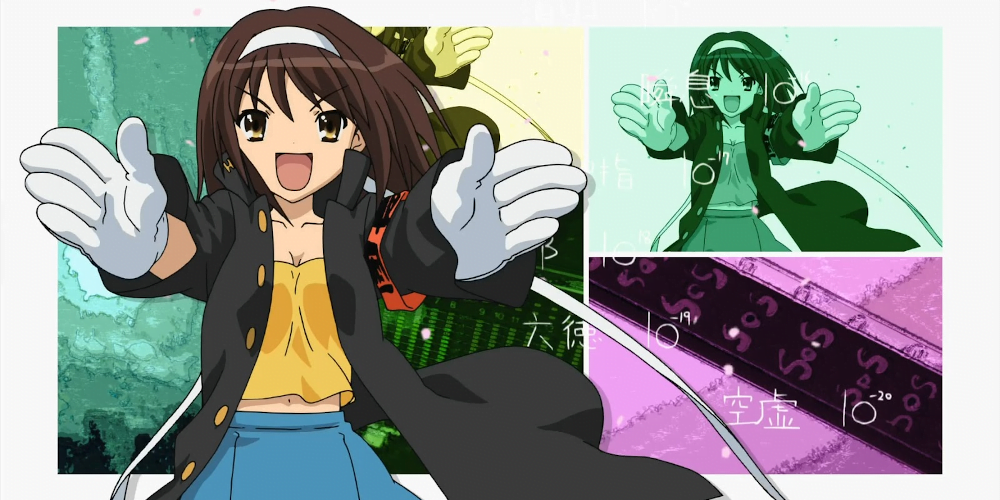
Letting in the Draft
This isn’t about drafting in games.
This is about the process of being creative, and part of how I sustain this blog working the way it is. Undeniable, part of it is practice – just writing every day means that writing every day gets easier. Some projects need a lot of writing, and there are some days when this blog is getting a thousand words out of the ten I wrote in a day. But that’s also my luxury – I am in a job where a lot of what I do comes down to communicating, either in words to one person or on paper to a group.
Still, I have days where it’s hard. Yesterday was difficult, and there have been other days when it’s been difficult. Today, though, I was able to pull up this article, this little stublet, and go: Oh hey, dang. I can work from this. I can belt out a few hundred words on this idea.
A few days ago, I was struggling to write. So what I did was pulled open the blog draft box, and I wrote ten little stubs. Just a single sentence of ‘write about this thing, at one point, in the future.’ And then, a few days later, when I was struggling again, I checked it out. I looked at the ideas I’d put there. Some of them, I went: That’s dumb, or, hey, I have a better version of this already, or this will be a lot of work. Some got changed, some got deleted.
This one got expanded.
This is about practice. This is about spending the time and effort to make sure that you can look at what you do and be satisfied with an ‘enough.’
This is enough.
Explaining to you how I got to enough is enough.
And it’s enough for you too. Don’t beat yourself up for modest goals.
Game Pile: Hurtin’ Hermits
I did scrap my ‘talking about Season 7 of Hermitcraft’ article – and instead, you get this, me playing one of the minigames inside the world download.
We Are The Night: Speaking The Notion
I wanna make a Blades in the Dark hack?
This is a little trickier, for me, than you might think. I have a lot of system mastery of some games, but Blades in the Dark is both elegant mechanically and frictionless in action, which means that the normal things I start to tinker with might not work. I find myself trying to respin a spiderweb.
I’d normally look to templates, or look for a series of guidance on that matter. And uh, like, the main video series with insight into it is both pretty old and pretty cumbersome to grapple with and the video is much more ‘two dudes have a conversation’ and one of those dudes is Adam Koebel. Plus, a lot of the advice is more ‘hey, you can use this to do things like this’ without giving much actual concrete information about system purposes and the way things change. It’s just not a fun scene.
Back in 2019 I made some posts as I explored what I’d need to make a 4th edition mod called Hunter’s Dream. In the end, I hit most of my goals for what I’d need in a top down structural way, and the remaining work is just about executing on it – filling tables, and stuff, and 2020 happened and that kind of project wasn’t really pursuable. Still, documenting ideas is kind of my job right now, and the actual process was really interesting. It was writing about the thinking of my process of making and documenting that process.
How did we start huh.
Well, the way I started on Hunter’s Dream was by outlining the thing I wanted the game to be about. The fantasy I wanted to enable. Then I looked at the systems in the game, and the things that the game rules needed to be able to include, like an ovearching theme. I talked about mechanics I knew I wanted to include. And then I looked at that, and took into account what work I’d need to do to realise it.
Well.
Okay.
Here then, is the pitch:
No, wait, here’s the notion.
I like Clay and Corey. I think they are great. I think they have great minds for character design and storytelling and problem solving. I think that playing with them in an RPG would be cool. But I don’t want to make them have to learn a point based bullshit-em-up for a RPG system to make superheroes, because all superhero TTRPG Systems I’ve ever encountered have been shit. But what isn’t shit is Blades in the Dark with its fluid sense of narrative and cinematic willingness to play with time and planning.
And from there we get a plan:
- I want to make a game that lets you play the Dollars from Durarara!!, Robin from We Are Robin, the Spiders from Into the Spider-Verse and operators from Global Frequency.
- I want players to feel like a modern-day ‘gang’ that represents a surrogate vigilante government for people whose government has abandoned them.
- I want characters to wear colours or signs or symbols that say we belong, you don’t.
- I want to make a game that shows you what you’d fight for.
Blades in the Dark is already a game about a gang, with a unified theme and presence, that controls an area, fighting with factions around them to achieve your ends. In Blades it’s all pre-emptively designed to the conclusion ‘that sucks and you’ll die soon.’ What I want is the idea that players can build their little story about saving their sector, beating some villains, having that taste of victory, all in an environment that feels like stories I enjoy, and that speak to a truth about what All Cops Are.
And now I have mentioned the idea. It’s somewhere. And I have to follow through on it if people respond to the idea well.
Right now, the name I have for this project is We Are The Night. It may change, because that’s also the name of a German Vampire Lesbian Erotic Thriller. But we’ll see.